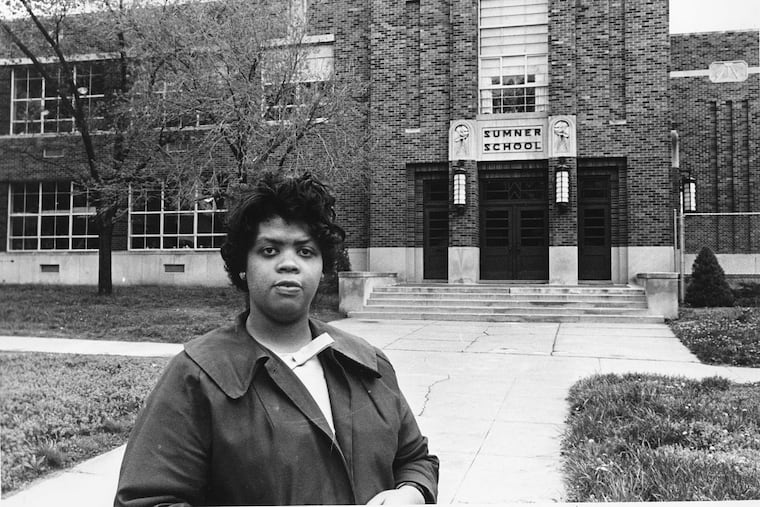The segregating effects of school choice policies | Opinion
One way to circumvent the segregating effects of school choice policy is for parents to opt into their neighborhood schools

Every parent wants the best education for their child, but options are often limited for a variety of reasons. One challenge is that schools in the United States are socioeconomically and racially segregated and unequal, a condition recently examined in a Stanford study, “Is Separate Still Unequal?”
What the Stanford study left out is how school segregation is maintained or exacerbated in part via school choice policy, and how parents, school leaders, and policymakers can work to break that cycle. As two qualitative researchers, we have analyzed this topic deeply and have found that school choice options can have a segregative effect. Our findings point to both the pitfalls of school choice policy, and also the promises when diversity is the goal.
The pitfalls of school choice policies
School choice policies (such as charters, vouchers, specialized, and open enrollment programs) are typically imagined as a way to give all families the opportunity to send their children to schools of their choosing. However, this philosophy is inherently flawed in the most basic way: It wrongly supposes that all parents will be equal consumers in the school choice marketplace. In actuality, school choice programs are modeled after free market principles of competition and scarcity. Even in extreme cases — for example, New Orleans, which no longer has traditional district run public schools — there is still not complete choice. Families in a choice model still must complete an application, which can prove more challenging for families with language barriers, lack of knowledge about the system, or limited access to the internet. Some parents learn to game applications, schools may maintain different deadlines/admissions requirements, school leaders can have practices that exclude certain students, or competitive lotteries can leave little chance of acceptance. Many families are underserved by choice and this leads to tensions and frustrations even amongst the advantaged, who have been found to behave in ways that secure advantages for their own children.
Roda and Wells found that high income, white parents wanted diverse school choices, but their options for these were few and difficult to get into. In Roda’s 2018 study she found that to take advantage of school choice, parents employed measures that favored the advantaged (paying for test prepping and tutoring for selective admission schools, employing insider tricks for enrollment or when filling out the complex and time-consuming applications, and paying for private transportation to schools when accepted).
Makris found that in a gentrified community, families from lower socioeconomic backgrounds did not fully utilize school choice options, such as applying to charter schools popular with middle-class residents. Families from lower socioeconomic backgrounds were unaware of all of the options or did not know that they were tuition-free or accessible to all. While families from all socioeconomic backgrounds experienced this same charter confusion, middle-class families learned about the options through their social networks (friends, colleagues, social media, etc.) when their children came of age to apply.
The promises of school choice policies
Despite the pitfalls of choice policy, in some urban areas where gentrification is occurring and wealthier families have moved into low-income communities of color, there is potential for more diverse public schools. For instance, in response to a 2014 Civil Rights Project study naming New York City as one of the most segregated school systems in the country, the Diversity in Admissions program (DiA) began as a way to create more integrated schools. The 100 participating schools are required to use socioeconomic variables as set-aside categories to diversify their schools and to stop public school gentrification that may exclude students historically served by the schools. This type of choice plan, with explicit diversity goals, can expand the school options of low-income parents of color.
There are also mechanisms that charter schools, and other schools of choice, can employ to be intentionally diverse by design. Promising practices include weighted lotteries, universal enrollment systems with districts, regional school models or inter-district schools, noncompetitive admissions, and strategic recruitment, among others.
Yet another way to circumvent the segregating effects of school choice policy is for parents to reject the market-based model of school choice by opting into their neighborhood schools. In Roda’s study, she found a diverse group of gentrifier parents who chose their local schools because they believed leaving for choice options would put local schools at a disadvantage.
A path forward
To reduce opportunity gaps, proactive integration measures are necessary. These include setting diversity goals, developing diversity in admissions systems, ensuring equitable school funding, building positive relationships within schools, and creating a racially diverse teacher workforce. In these gentrifying school contexts, however, it is important to protect diversity through inclusive practices.
Allison Roda is assistant professor of education in Molloy College’s Educational Leadership for Diverse Learning Communities, Ed.D. program. She is the author of “Inequality in Gifted and Talented Programs: Parental Choices About Status, School Opportunity, and Second-Generation Segregation,” (Palgrave Macmillan, 2015).
Molly Vollman Makris is associate professor of urban studies at Guttman Community College, CUNY, where she also serves as the Program Coordinator for Urban Studies. Her book “Public Housing and School Choice in a Gentrified City: Youth Experiences of Uneven Opportunity” (Palgrave Macmillan, 2015) won the American Educational Studies Association Critics Choice Book Award and the New Jersey Studies Academic Alliance Book Award.